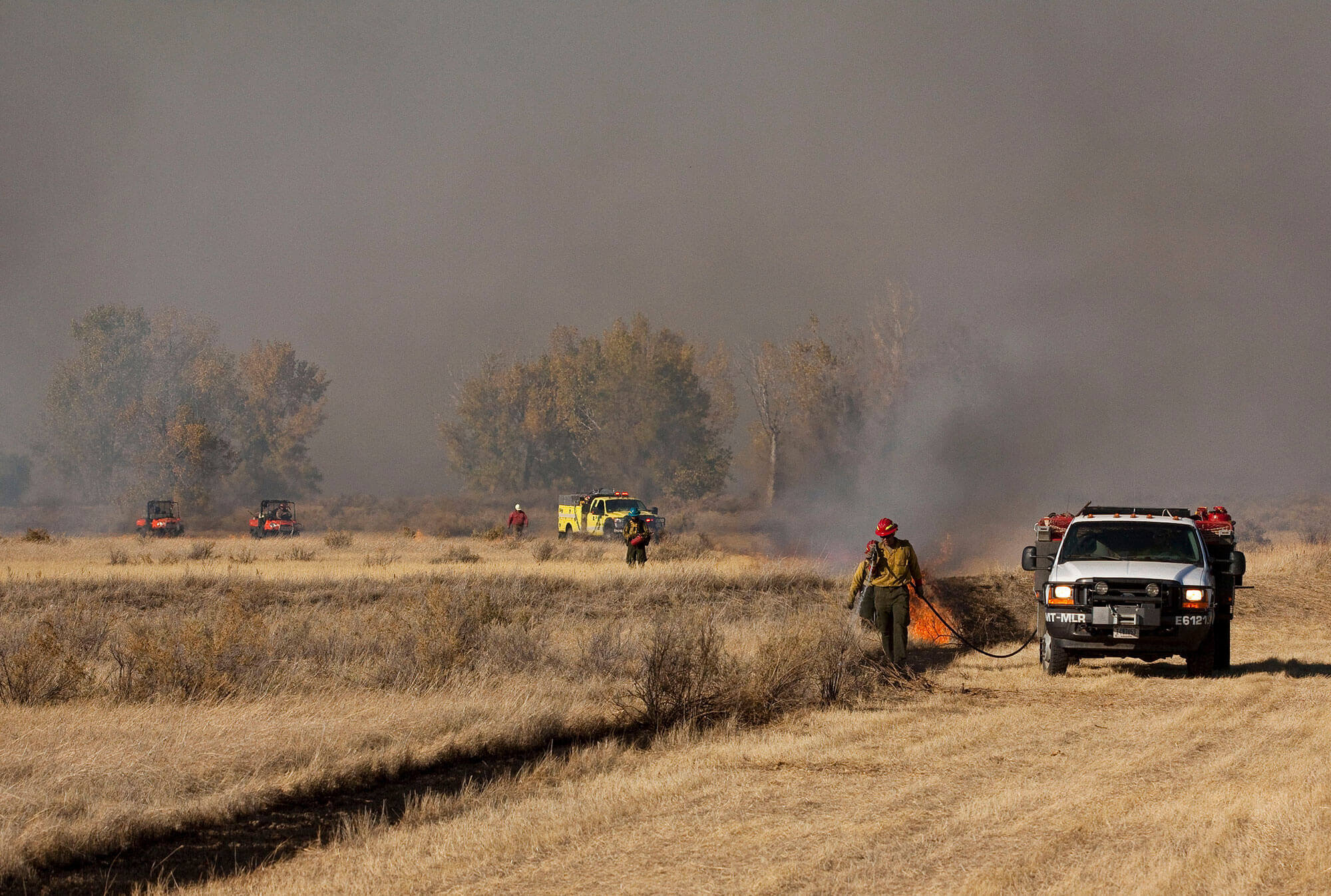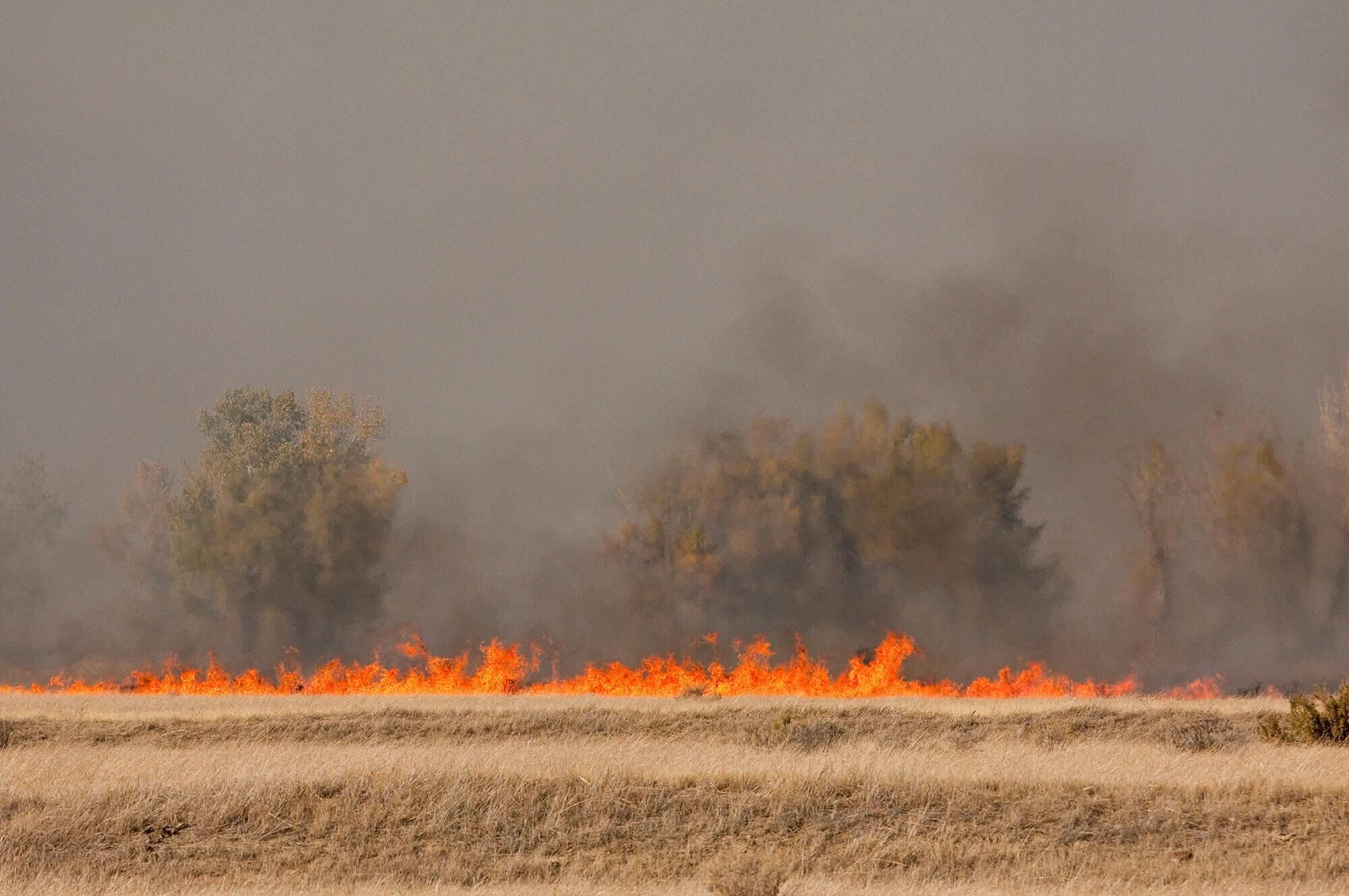There is a complex but critical interaction between herbivorous animals (particularly bison and prairie dogs) and wildfire in the grasslands that keep grasslands structurally and biologically diverse.
Grasslands evolved to withstand somewhat frequent burning. Because so much of grassland plant biomass is underground, fire does not typically kill prairie plant species but merely burns off the aboveground parts. This triggers vigorous regrowth which attracts many herbivorous animals. In fact, indigenous peoples used to set grass fires on purpose, to thin overgrowth, trigger regrowth, and attract large animals to hunt. A healthy prairie is like a quilt, where certain patches have been burned recently and others not in a long time, and where some patches have been grazed heavily, some lightly, and some not at all. This semi-random patchwork of a healthy grassland is what promotes biodiversity, because each different patch is an ideal habitat for some species at some point in their lifecycle. Particularly noticeable in birds, this shifting mosaic is a critical component of biodiversity.
We conducted our first controlled burn of nearly 900 acres in 2012 in an effort to expand prairie dog habitat and restore an important ecological process to the landscape. The fire was a result of collaboration between American Prairie, the US Fish & Wildlife Service, which provided expertise, personnel, and equipment to conduct the burn, and World Wildlife Fund, which was instrumental in project design and funding. Beginning in 2023 we will conduct controlled burning on a more regular schedule, to reintroduce this vital ecosystem process back to the lands we own. Our goal is to burn 1,000 – 3,000 acres annually in a way that is strategically designed to help us restore habitat, attract large herbivores, and aid in the rewilding of American Prairie.



